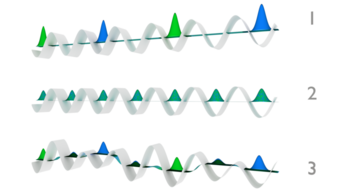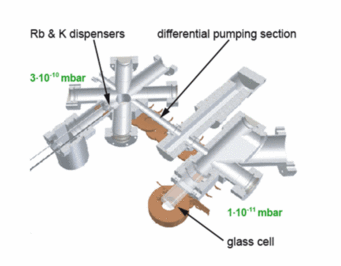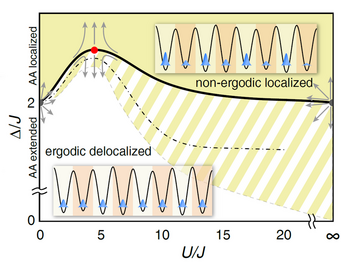Ultracold Fermions in Optical Lattices
Dynamics of highly excited fermions in optical lattices
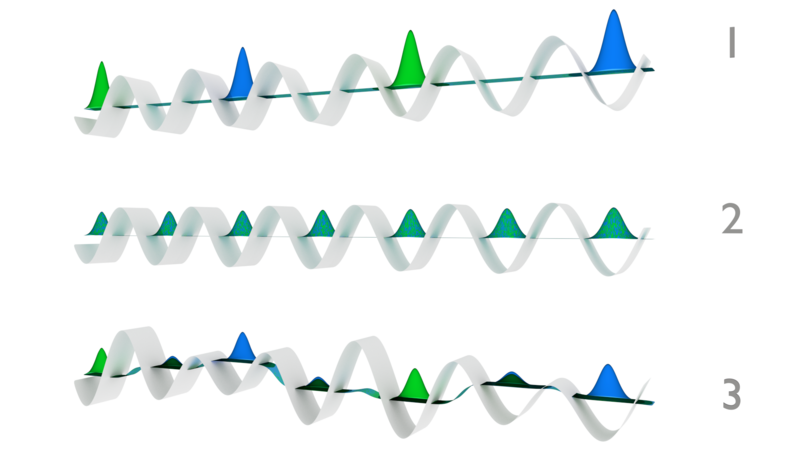
While generic many-body systems will typically reach a thermal “featureless” state via their intrinsic time evolution, in disordered systems, where neighboring sites have different on-site energies, quantum correlations can persist for infinite times. Anderson found (PR 109, 1492 (1958)) that the introduction of disorder results in the localization of single particles. The generalization of this effect to interacting systems is known as many-body localization (MBL).
We investigate the behavior of highly excited many-body systems by monitoring the decay of a charge-density wave (CDW) initial state, where every second lattice site is empty (1). In a thermal system this population imbalance quickly relaxes and atoms spread across all lattice sites (2). Upon the introduction of sufficiently strong disorder, however, the system enters the MBL phase and thus retains a memory of its initial state (3).
Experimental Setup
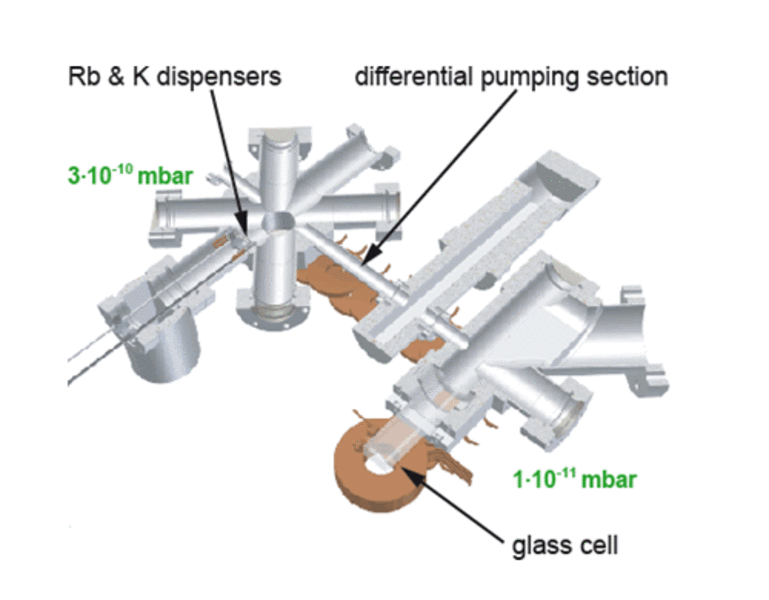
In our setup, we use (bosonic) 87Rb atoms to sympathetically cool a gas of (fermionic) 40K atoms to quantum degeneracy. In our dipole trap, we reach temperatures of T = 0.15TF, where TF denotes the Fermi-Temperature.
Our optical lattice setup features a superlattice, which is created via the superposition of a lattice laser with its second harmonic and a well-defined phase. The superlattice is used to prepare and read out the CDW state. Additionally, our setup is equipped with an incommensurate lattice on top of the superlattice that creates the (quasi-periodic) disorder required for localization.
Observation of many-body localization of interacting fermions in a quasi-random optical lattice
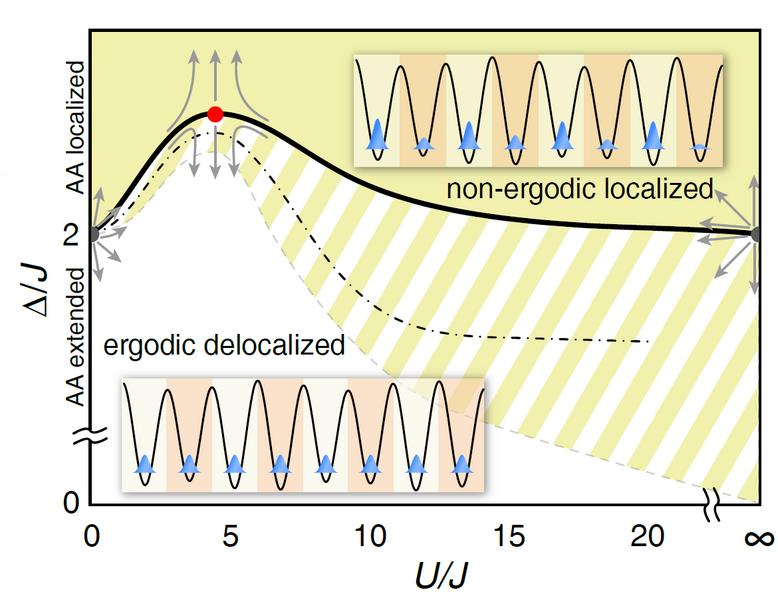
Disorder can stop the transport of non-interacting particles in its tracks and therefore freeze the dynamics. This phenomenon, known as Anderson localization, occurs in disordered solids, as well as photonic and cold atom settings. Interactions tend to make localization less likely, but disorder, interactions, and localization may coexist in the so-called many-body localized phase. This phase is very special in the sense that it challenges the common understanding of thermalization in quantum mechanical systems. Usually, systems rapidly relax and approach thermal equilibrium, if prepared in a state far from thermal equilibrium.
Systems in the many-body localized phase, however, can get “stuck” in non-equilibrium states that persist for very long times. Here, we detect many-body localization in a one-dimensional optical lattice initially filled with atoms occupying alternating sites. Externally induced disorder and interactions prevented the system from relaxing quickly to a state with a single atom on each site
